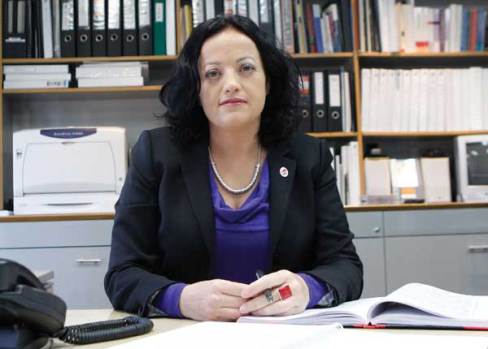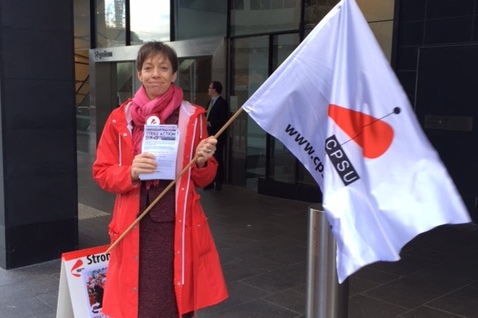By Julian Bajkowski
Federal public servants are steeling themselves for a wide-ranging Commission of Audit by an incoming Tony Abbott Coalition government as the Prime Minister Elect prepares to come good on his election promise to cut down on wasteful and inefficient expenditure.
Having received the incoming government brief from the public service known as the ‘blue book’ from the Departments of Prime Minister and Cabinet, Treasury and Finance, the task of appointing an expert to run a ruler over the entire administration is expected to quickly come to the fore of the Abbott government’s focus alongside preparing to abolish the Carbon Tax.
While the Coalition is still keeping the names of any prospective audit chiefs close to their chests, the big immediate challenge for many senior public servants will be to quietly identify and potentially volunteer areas of day-to-day administration that could potentially be pruned back to extract savings without necessarily sacrificing jobs.
Mr Abbott and Treasurer-in-waiting Joe Hockey have so far pledged to cull around 12,000 full time equivalent public service positions the end of 2015, a number that underpins a budget saving of around $5.2 billion that was a key part of the election campaign.
But a big part of the challenge for whoever takes on the Commission of Audit will be finding areas to extract sizeable savings outside designated ‘frontline’ areas that have been quarantined that include public-facing staff at Medicare, Centrelink, the Australian Federal Police, Defence and Customs.
The Department of Health and Ageing has been named as a potential target for cuts as well as a myriad of smaller agencies.
Other options doing the speculative rounds include potentially monetising some of the government’s vast data and information holdings ranging from procurement and agency spending to increasing opportunities to recoup money by allowing advertising on government websites.
So far the Coalition has indicated that it expects the 12,000 reduction in headcount to come via natural attrition, a less costly option than voluntary redundancies –where those typically eligible for biggest payouts beat a path to their financial planners via the APS exit door, often to return as contractors.
The clear sticking point for the incoming government now is how to maintain the normal staff turnover of public servants when the clear enticement of a payout could be around the corner.
Many recruiters now privately concede they expect public service staff turnover rates to stall.
Agencies already cut under Labor’s loathed efficiency dividend – which the Coalition will keep – are preparing for significant change.
One obvious tactical line of defence for the public service is to self-nominate areas that could become markedly more efficient in productivity terms by using technologies like the automation of frontline interactions with the public or clients and fee up staff for other activities.
Centrelink in particular has made noticeable headway in using online tools and mobile apps to both improve and make its services more timely and efficient, a move that will see its call centre and client facing staff gradually increase their load of more difficult and challenging customer cases.
Some public service insiders have privately indicated to they believe the Commission of Audit will necessarily have to be open to more innovative ways of delivering administrative functions using technology and cross-agency collaboration to even start to hit its numbers.
One example cited against an overly rigid or dogmatic approach was Labor’s Gershon 2008 Review of government technology procurement which essentially missed a number of big picture productivity and efficiency opportunities – like mobility, cloud computing and rapid software development – in favour focusing on more orthodox governance methodologies.
Although Labor eventually claimed savings of around $1 billion under measures under Gershon’s measures, the review also quietly added efficiency suggestions from the public service, including mandating power efficiency standards and practices for equipment that reduced escalating power bills.
Another theme that some public sector veterans believe the Coalition is likely to revisit is rationalising the number of agencies and statutory authorities along the lines of the Howard era Uhrig Review that was commissioned in 2002 and delivered in 2004.
Authored by former Westpac and Rio Tinto chairman John Uhrig, the report urged a series of governance reforms to make reporting lines for statutory authorities more accountable to improve their performance.
One of Uhrig’s strongest recommendations, that an Inspector General of Regulation be created, was ultimately rejected.
Even so, the Howard government did ultimately instigate a consolidation of independent welfare functions across Centrelink, the Health Insurance Commission, the Child Support Agency, Commonwealth Rehabilitation Service, Australian Hearing and Health Services Australia into the Department of Human Services – all answerable to incoming Treasurer Joe Hockey.
Former public service chiefs close to the incoming government have also been making their ideas known.
One is former Secretary of the Department of Prime Minister and Cabinet, Dr Peter Shergold, whose oversight of the Coalition’s election costings is seen by some in the public service as notable influence on making ambitions for the public service realistic.
One of the bigger ideas Dr Shergold has been championing through the Institute of Public Administration Australia (IPAA) is the public sector partnering with not-for-profit and community-based organisations to help create a market for the delivery of ‘public goods’ – especially around costly areas like social welfare and employment that traverse jurisdictions.
Although much of the market is effectively structured around outsourcing government service delivery, Dr Shergold has stressed many of the benefits potential need to be viewed from what they deliver in terms of transformation and innovation as opposed to dollar figure cost savings to government.
That view has also been echoed to a degree by outgoing Prime Minister Kevin Rudd’s appointment to replace Dr Shergold, Terry Moran who has publicly advocated that many federal service delivery functions would be more effectively delivered at state and local government levels.
“It’s nuts for the Commonwealth to try and set up service delivery operations in health, education, vocational education and training,” Mr Moran told Radio National earlier this year.
“Because there are other people beyond state and at state level who will do it better and that can yield big efficiencies.”
Whether the states would welcome any such move remains to be seen.
Comment below to have your say on this story.
If you have a news story or tip-off, get in touch at editorial@governmentnews.com.au.
Sign up to the Government News newsletter
Most read
Scathing report finds little has changed at PwC
Qld council welcomes progress on massive battery system
Inquiry to consider how federal govt can address councils’ sustainability issues
‘Local’ procurement turns out not to be so local, committee hears
Another report finds local government falling down on cyber security


